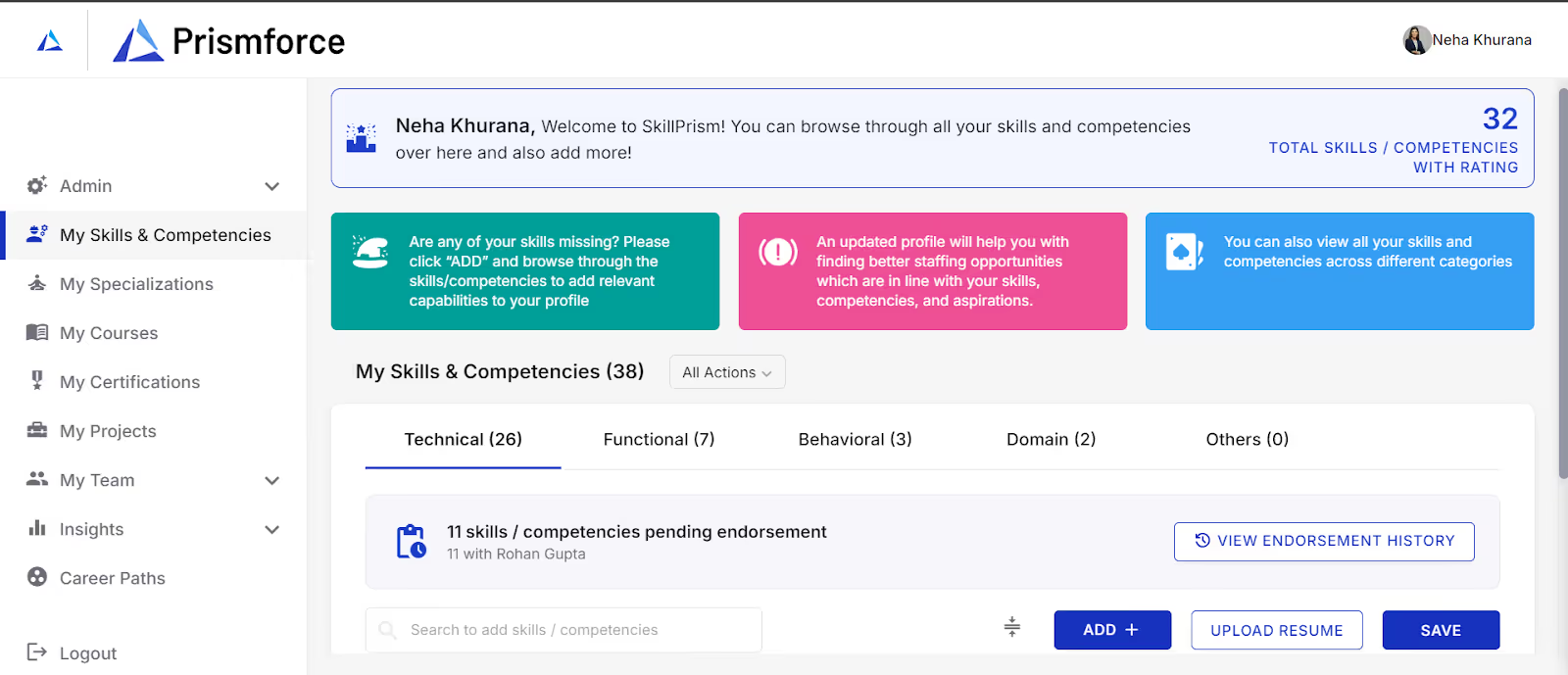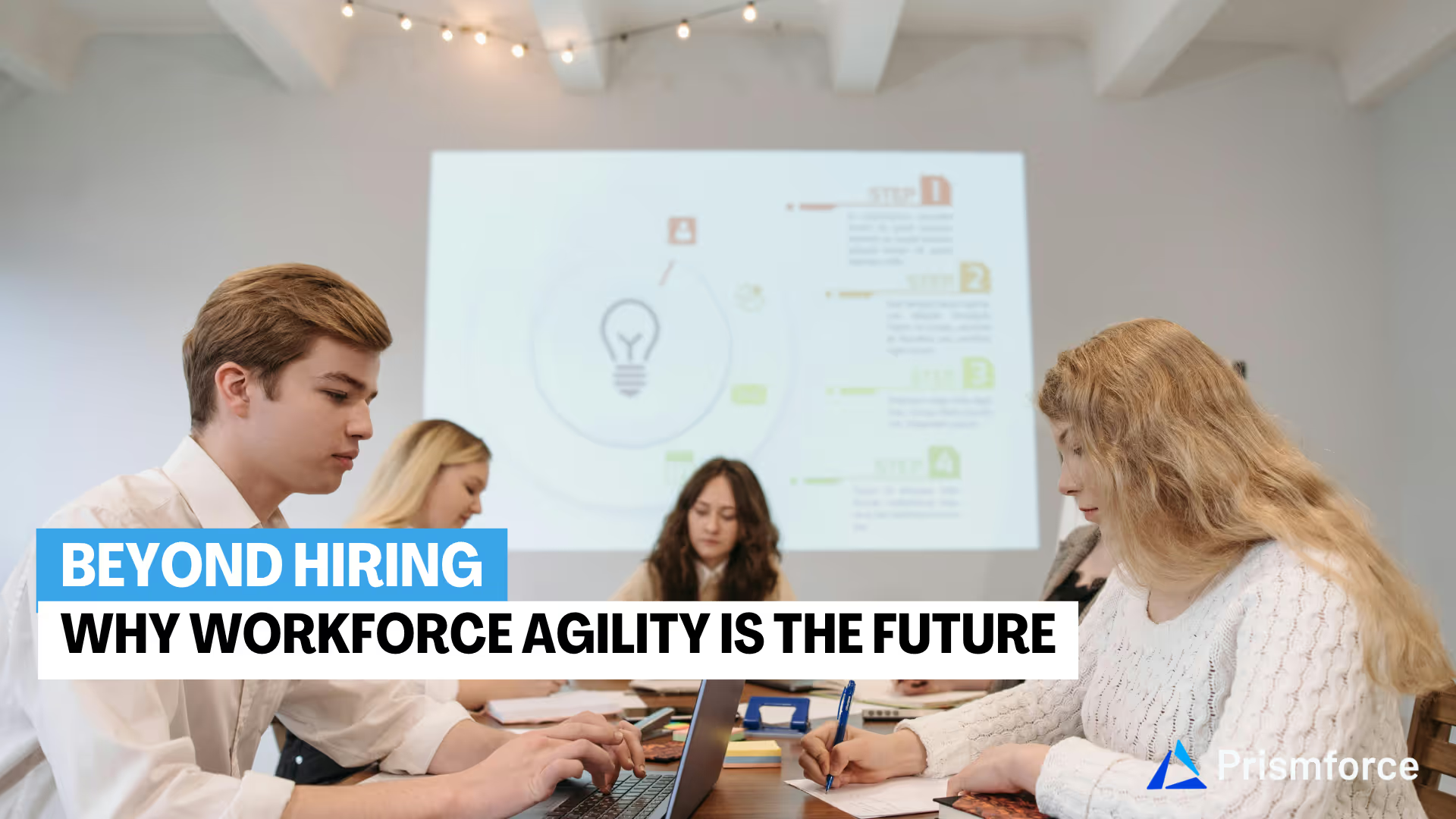.avif)
Data is the lifeblood of decision-making, especially when it comes to your workforce. Organizations believe poor data quality to be responsible for an average of $15 million per year in losses. As a CHRO, your role is pivotal in shaping the organization's most valuable asset: your workforce.
Accurate and up-to-date insights into your employees' skills, performance, and engagement are essential for optimizing every aspect of workforce management – from hiring and development to retention and overall strategy. However, many organizations unknowingly rely on faulty workforce data, So what happens when your workforce data is outdated, incomplete, or inaccurate? It's like trying to navigate a maze with a faulty map – you're likely to get lost, waste time, and miss opportunities.
Let's explore three telltale signs that your workforce data might be failing you, and what you as a CHRO can do to get back on track.
Sign #1: You're Struggling to Answer Basic Questions
Diagnosis: Incomplete Data
One of the most obvious signs of faulty workforce data is the inability to answer fundamental questions about your employees. Picture this: You're in a meeting, and a stakeholder inquires about the percentage of millennial employees or the average time it takes to fill a vacant position. If you hesitate, rely on guesswork, or need days to gather the information, your workforce data is falling short.
This lack of readily available information is a significant red flag. It indicates that your data is either incomplete, scattered across disparate systems, or not organized in a way that facilitates quick analysis. In today's fast-paced business environment, timely access to accurate data is crucial.
The Checklist:
- Do you dread data requests? As a CHRO, you are responsible for your HR team. But if they feel overwhelmed with ad-hoc queries, it's a sign that your data isn't readily accessible or organized.
- Are your reports outdated? If your data takes weeks or even months to compile, it's already irrelevant by the time it reaches your desk. You need real-time insights to make timely decisions.
- Do you have conflicting information? If different departments are using different data sets, it's impossible to get a clear picture of your workforce. This leads to confusion and misalignment.
The Impact of Incomplete Data
Incomplete data leaves you in the dark about critical aspects of your workforce. It's like trying to assemble a puzzle with missing pieces; you can't see the whole picture, making it difficult to make informed decisions. This lack of visibility can lead to costly errors in various areas:
- Hiring: You might miss out on top talent because you don't have a clear understanding of the skills and experience your workforce lacks.
- Development: You might invest in training programs that don't address the actual needs of your employees, leading to wasted resources and minimal impact.
- Retention: You might struggle to identify the reasons behind high turnover rates, making it difficult to implement effective retention strategies.
Sign #2: Your Decision-Making Feels Like Guesswork
Diagnosis: Outdated Data
When it comes to critical workforce decisions – such as which roles to prioritize in hiring, how to allocate training budgets, or what benefits to offer – you need solid data to back you up. Relying on gut feelings or outdated information is akin to gambling with your company's future. It's like trying to predict the weather based on last week's forecast – you're bound to get caught in a storm.
The Checklist:
- Are your initiatives falling flat? If your talent programs, engagement initiatives, or retention strategies aren't producing the desired results, it's often because they're not based on accurate, up-to-date data about your employees' needs and preferences.
- Are you surprised by turnover? High employee turnover is a costly problem. If you're constantly blindsided by resignations, it suggests that you're not paying attention to the data that could predict and prevent attrition, such as declining engagement scores or dissatisfaction with compensation.
- Are you missing opportunities? Without accurate data on your workforce's skills and potential, you might overlook internal talent capable of filling key roles. This can lead to unnecessary external hires and missed opportunities for employee development.
The Impact of Outdated Data
Outdated data can lead to a cascade of negative consequences:
- Misallocated Resources: You might invest in training programs that don't address your employees' current needs or offer benefits that don't resonate with them. This results in wasted resources and missed opportunities for impactful interventions.
- Increased Costs: High turnover rates due to unaddressed dissatisfaction or lack of growth opportunities can significantly increase recruitment and onboarding costs.
- Decreased Morale: When employees see that their needs aren't being met and that their development is stagnant, it can lead to decreased morale and engagement, further fueling turnover.
Sign #3: You're Losing the Trust of Your Employees
Diagnosis: Inaccurate Data
Perhaps the most damaging consequence of faulty workforce data is the erosion of trust among your employees. As the CHRO, you know that trust is the foundation of a strong organizational culture. When your data is inaccurate, it can lead to a cascade of problems that directly impact employees' experiences and perceptions of the company
Imagine receiving an incorrect paycheck, being denied a promotion based on erroneous performance data, or being evaluated unfairly due to inaccurate information. These experiences are not only frustrating but can also make employees feel undervalued and disrespected.
The Checklist:
- Are there complaints? If employees are raising concerns about the accuracy of their personal data, performance reviews, or compensation calculations, it's a clear indication that there are deeper issues with your data management practices.
- Is there a lack of transparency? When employees feel like decisions are being made behind closed doors without clear explanations or data-backed reasoning, it can breed suspicion and resentment. Transparent communication is essential for building trust.
- Are you losing top talent? Inaccurate data can create a toxic work environment where high performers feel undervalued and unappreciated. This can drive them to seek opportunities elsewhere, leaving your company with a talent drain.
The Impact of Inaccurate Data
Inaccurate data is not just an administrative headache; it can have far-reaching consequences:
- Decreased Morale and Engagement: When employees feel like they're not being treated fairly or that their contributions are not accurately reflected, their morale and engagement plummet. This can lead to decreased productivity and a negative workplace culture.
- Increased Legal Risks: Inaccurate data, especially regarding compensation and benefits, can expose your company to legal challenges. Misclassified employees, incorrect overtime calculations, or discriminatory practices based on faulty data can result in costly lawsuits.
- Damaged Reputation: Word travels fast. If your company develops a reputation for mishandling employee data, it can make it harder to attract and retain top talent.
What Can You Do About It?
When your workforce data is failing you, it's crucial to take immediate action to correct course. Here are some steps you can take to ensure your workforce data is accurate, comprehensive, and actionable:
- Adopt a Sophisticated Workforce Management System: Traditional Human Capital Management (HCM) systems often fall short of providing the detailed, dynamic skill management capabilities needed in today's fast-evolving business environment. Prismforce offers a robust solution tailored for the tech services industry, providing an extensive out-of-the-box skill taxonomy with over 10,000 curated skills. This ensures comprehensive skill visibility and management across your organization.
- Utilize AI-Driven Profiling: Manual updates to employee skill profiles are prone to errors and incompleteness. 68% of HR executives agree benefits of AI outweigh the risks. Prismforce leverages AI to automatically capture and update skills from various data sources such as project history, allocation data, resumes, certifications, and even external platforms like LinkedIn and GitHub. This AI-led auto-profiling ensures that your workforce data is continuously updated and reflects the true capabilities of your employees.
- Implement a 360-Degree Skill Competency View: To get a holistic view of employee skills, use systems that aggregate multiple sources of competency data, including self-ratings, project ratings, expert reviews, certifications, and training records. Prismforce's 360-degree profile view provides a comprehensive profile for each employee, enabling better decision-making for role assignments and development plans.

- Enhance Search and Match Capabilities: Inefficient search and match processes can lead to high recruiter effort and missed opportunities for internal mobility. Prismforce's IntelliPrism module offers multi-factor search and match capabilities that allow for instantaneous and precise matching of employee skills to job requirements. This not only reduces recruiter effort but also promotes internal talent mobility.
- Facilitate Targeted Upskilling and Reskilling: A lack of holistic skill profiles and personalized learning and development (L&D) interventions can lead to low employee engagement, high attrition, and eventually higher talent acquisition costs. 79% of L&D pros agree: It’s less expensive to reskill a current employee than to hire a new one. Prismforce addresses this by providing tools for skill gap analysis, personalized learning recommendations, and progress tracking. This targeted approach to upskilling and reskilling helps retain talent and improves productivity.
- Promote Employee Mobility and Career Development: Enhancing employee mobility and career development opportunities is key to retaining top talent. Employees who transition into new roles within the company are 3.5 times more likely to be engaged than those who remain in the same position. Prismforce empowers employees by mapping out potential career paths and the skills required for each step, providing a clear and actionable roadmap for career growth.

- Leverage Data-Driven Insights: Actionable insights are critical for making informed decisions and driving organizational improvements. Prismforce’s InsightPrism offers a cockpit view of the organization, providing recommended actions for improvement based on real-time data analysis. This comprehensive overview helps identify trends, address issues proactively, and implement strategies that enhance overall workforce performance.

By leveraging Prismforce’s advanced capabilities, organizations can ensure their workforce data is not only accurate and up-to-date but also actionable and aligned with their strategic objectives. This comprehensive approach to workforce data management helps organizations make informed decisions, optimize resource allocation, and drive overall business success.
Final Thoughts
With 84% of CHROs increasing investments in skills-based talent architecture, it's clear that accurate, actionable workforce data is more critical than ever. Leading organizations recognize the need for precise data to drive strategic decisions and are leveraging tools like Prismforce to ensure their data is comprehensive and up-to-date.
By taking proactive steps to refine your data management practices, you can confidently lead your organization, ensuring every decision is backed by reliable insights. This approach will empower you to propel your workforce—and your organization—toward sustained success.



.avif)
